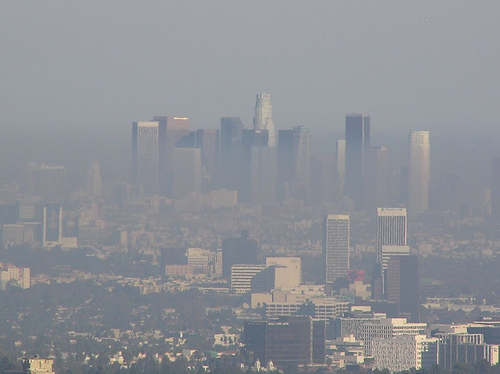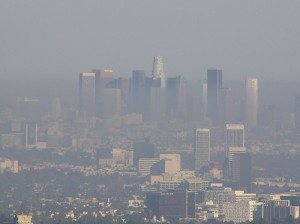How Clean Air Standards Save Lives

Scientists reported last week in the Journal of the American Medical Association (JAMA) that even short-term exposure to air pollution can increase your risk of having a heart attack–highlighting the critical importance of clean air safeguards.
For years, scientists have been accumulating evidence linking air pollution with heart attacks. The new research pulled together dozens of studies conducted in five different continents, and found that breathing polluted air for less than seven days–and in some cases even a single day–was associated with a higher risk of heart attacks.
Of course, there are ways to lower your risk of heart attack–eating right, exercising, taking prescribed medication. But choosing not to breathe isn’t one of them.
If you live in New York City, Philadelphia, the San Joaquin Valley, the Los Angeles basin, or the Salt Lake City area, you might be breathing polluted air on any given day, according to EPA monitoring data. The air in all these areas contains excessive levels of at least one of the pollutants covered in the study–fine particles, coarse particles, nitrogen dioxide, carbon monoxide and sulfur dioxide. Simply living near a major highway could expose you to harmful levels of pollution. A recent study estimates that 30 to 45 percent of people in large North American cities live in “exposure zones” near big roads.
While clean air safeguards have reduced the levels of these pollutants over the years, many areas in the country still fail to meet the current air quality standards. Millions of Americans–including 37 million children–are breathing unhealthy air. What’s more, researchers are finding that these pollutants can cause harm at lower doses than previously thought.
That’s why the EPA recently issued two new clean air rules that will limit pollution from power plants, including particulates, nitrous oxides and sulfur dioxide, all of which have been linked to heart attacks, as well as respiratory illness. Together, these two rules will save anywhere from 17,000 to 45,000 lives –every year–as well as prevent hundreds of thousands of cases of asthma and other respiratory illnesses. The economic benefits of these safeguards is estimated to be anywhere between $157 and $370 billion, annually.
Yet these life-saving rules are under attack from electric industry lobbying groups. They are trying to protect the industry laggards–those who have chosen not to upgrade some of the nation’s dirtiest power plants. As long as pollution is “free,” they would prefer to continue polluting. Saving lives is not really in their interest.
That’s why we have the EPA. That’s why we create clean air safeguards. Because pollution is not “free” for people who miss work, or school, or have to stay indoors, or are hospitalized, or die, because of breathing bad air. Because someone needs to be looking out for us, and it’s not the polluters.
[Photo By Chang’r]

